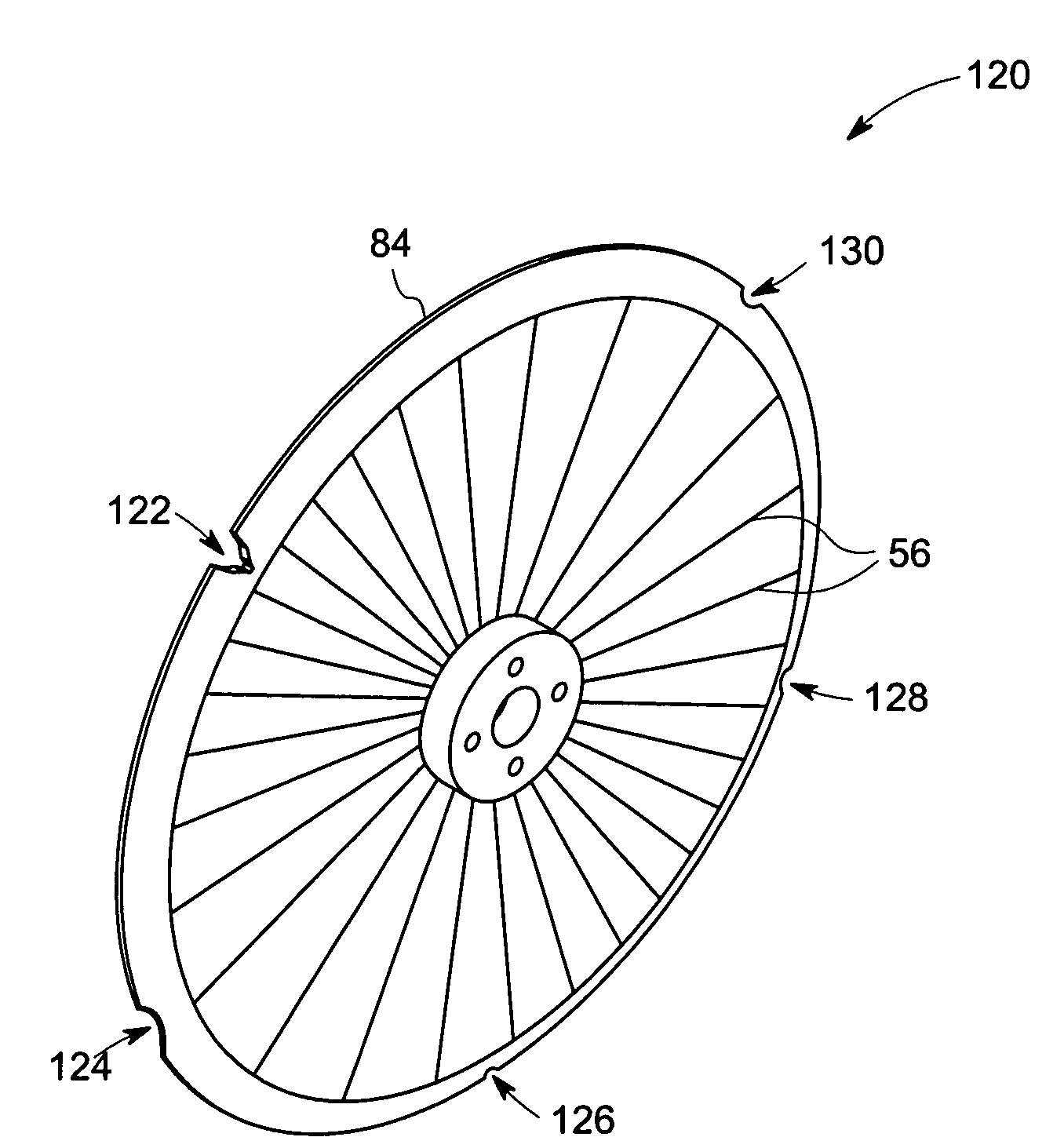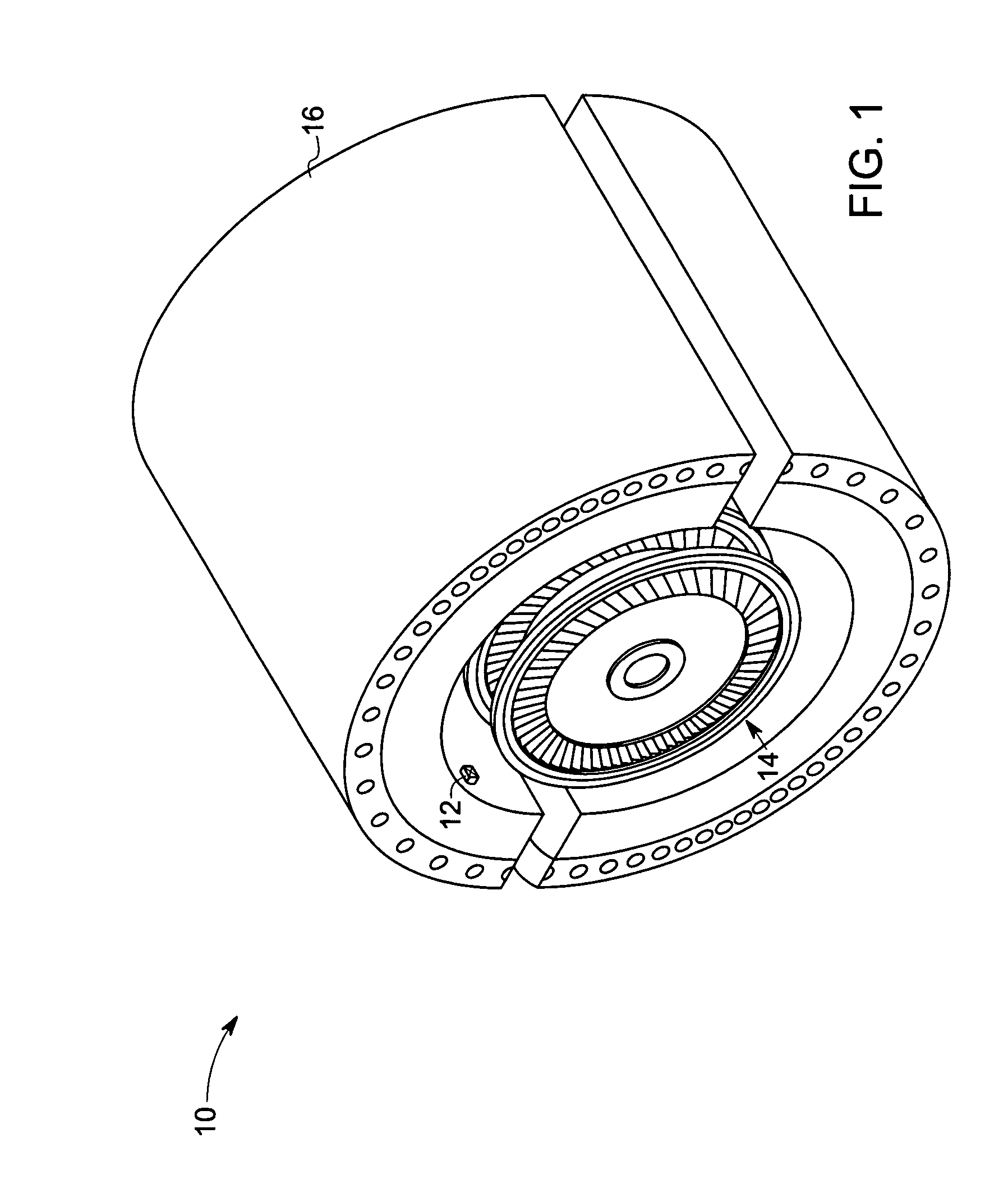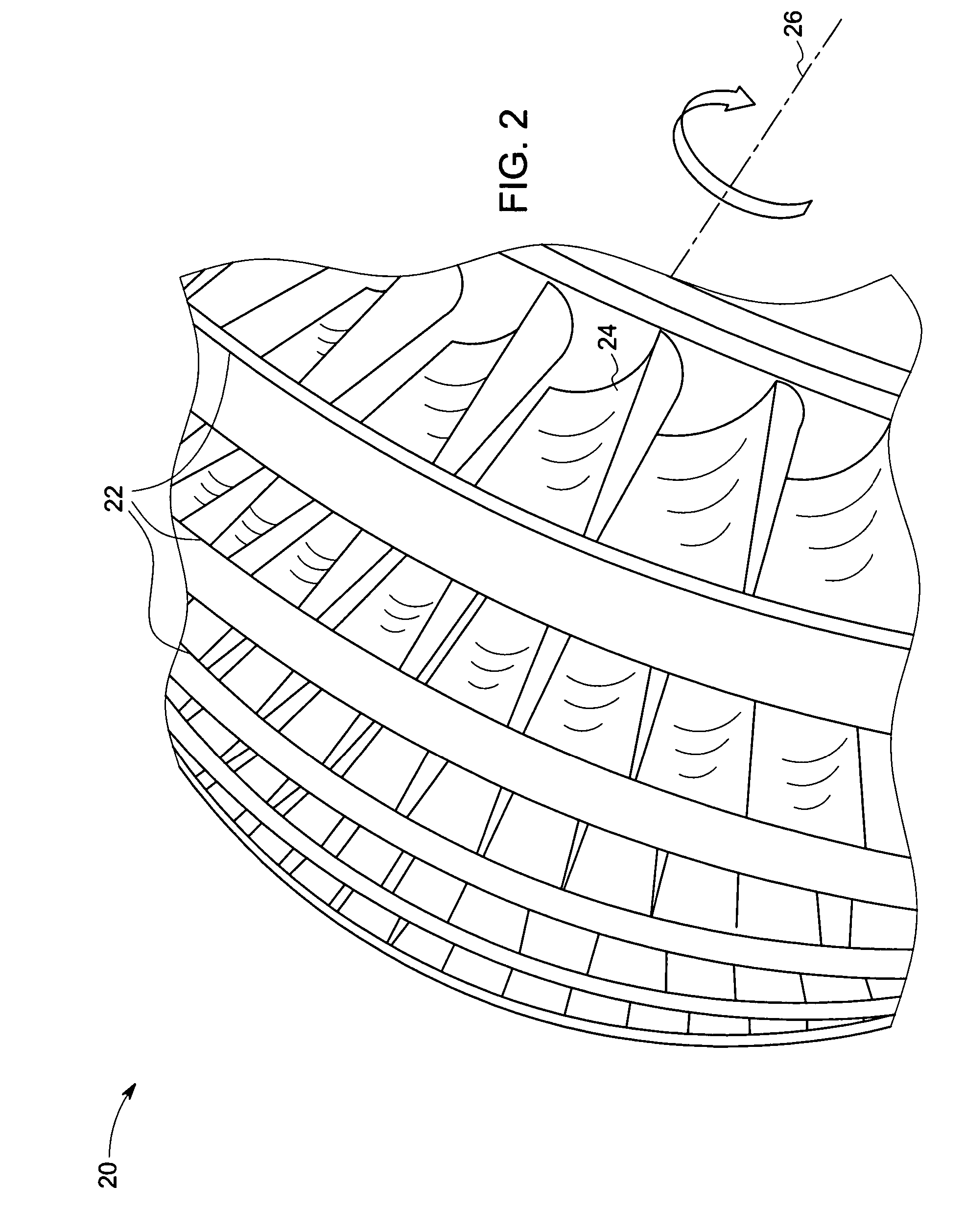Clearance measurement system and method of operation
a measurement system and clearance technology, applied in the direction of distance measurement, mechanical measurement arrangement, instruments, etc., can solve the problems of ineffective in-service measurement, measurement that does not account for clearance changes, and limitations of capacitance-based measurement techniques
- Summary
- Abstract
- Description
- Claims
- Application Information
AI Technical Summary
Benefits of technology
Problems solved by technology
Method used
Image
Examples
example 1
[0038]In an exemplary rotating machinery, the sensor output from the sensor 64 corresponding to the rotating component 82 at a distance “a” from the sensor 64 is represented by “x”. Further, the sensor output corresponding to the bottom of the reference geometry 86 (having a depth “b”) at a distance “a+b” is represented by “y”. Assuming that the clearance between the stationary and rotating components 62 and 82 changes to “2a” then the measurement from the sensor 64 corresponding to such clearance will be “x / 2”. In this embodiment, the bottom of the reference geometry 86 will be at a distance “2a+b” from the sensor 64. Therefore, the difference in signal corresponding to the rotating component 82 and the reference geometry 86 in the first case (at a distance a) will be “x−y”. Similarly, the difference in the signal for the second case (at a distance 2a) will be “x / 2−y”. Therefore, the difference between the two measurements is approximately x / 2 that corresponds to the clearance chan...
PUM
 Login to View More
Login to View More Abstract
Description
Claims
Application Information
 Login to View More
Login to View More - R&D
- Intellectual Property
- Life Sciences
- Materials
- Tech Scout
- Unparalleled Data Quality
- Higher Quality Content
- 60% Fewer Hallucinations
Browse by: Latest US Patents, China's latest patents, Technical Efficacy Thesaurus, Application Domain, Technology Topic, Popular Technical Reports.
© 2025 PatSnap. All rights reserved.Legal|Privacy policy|Modern Slavery Act Transparency Statement|Sitemap|About US| Contact US: help@patsnap.com



